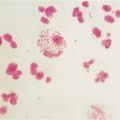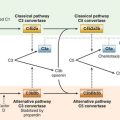CASE 41
Geoffrey is a 14-month-old child born with biliary atresia (absence of the biliary tree). His parents are advised that the only possibility of cure and a normal life is a liver transplant. Given the shortage of donors, the surgeon discusses the risk/benefit of living related transplants. Both parents are eager to consent, although the best match is deemed to be the father. Surgery involves transplantation of the left lobe of the father’s liver to his son. Both surgeries go well, and both patients make excellent recoveries, returning home within a week after surgery. There are no further complications of the father’s care. Some 4 weeks after the transplant, Geoffrey develops a desquamating, erythematous rash over his trunk, legs, and arms, a low-grade fever, and some diarrhea. His parents return him to the transplant center and are very concerned.
QUESTIONS FOR GROUP DISCUSSION
RECOMMENDED APPROACH
DIAGNOSIS
On the basis of these laboratory results and the clinical presentation, Geoffrey was diagnosed with GvHD. In GvHD, donor cells of allograft origin target host antigen present on the epithelia of the gut, lung, and biliary tree. Inflammation, edema, and increased vascular permeability to both fluid and cells characterize these reactions.






